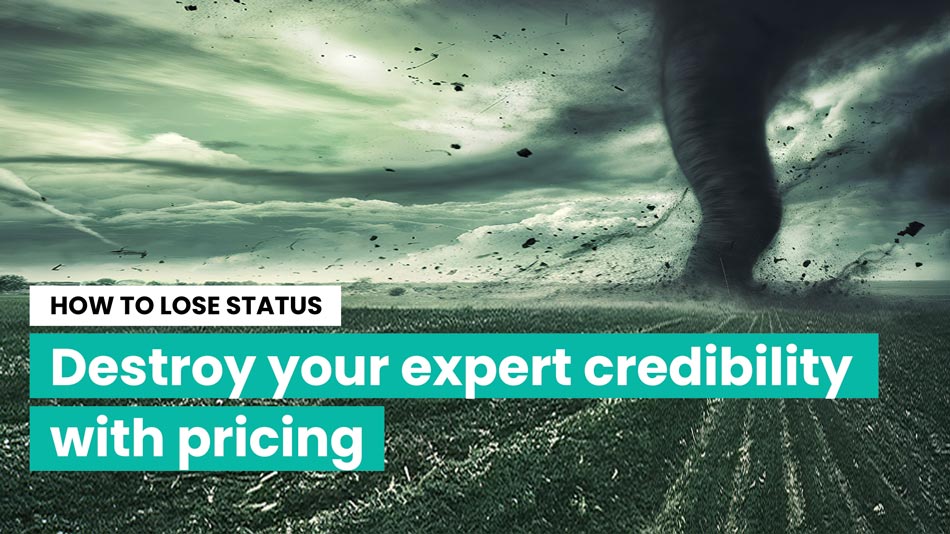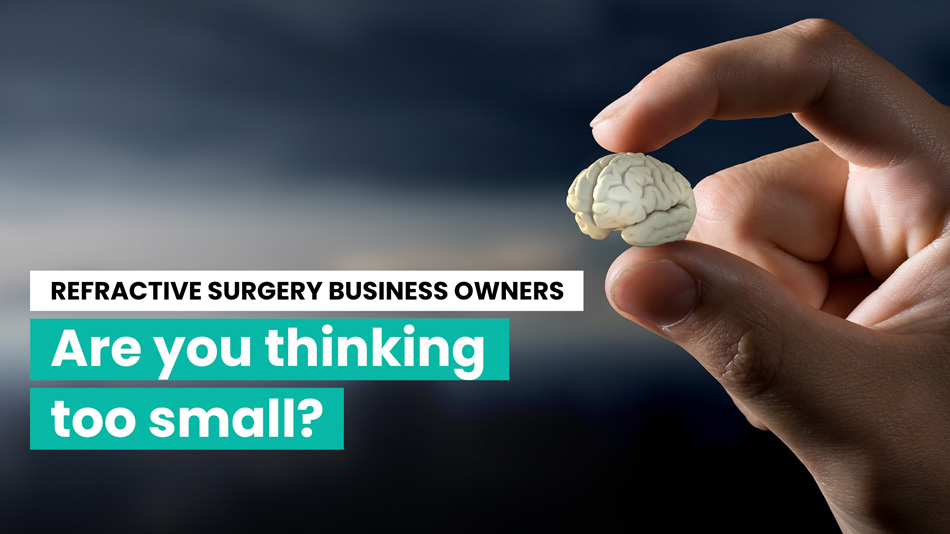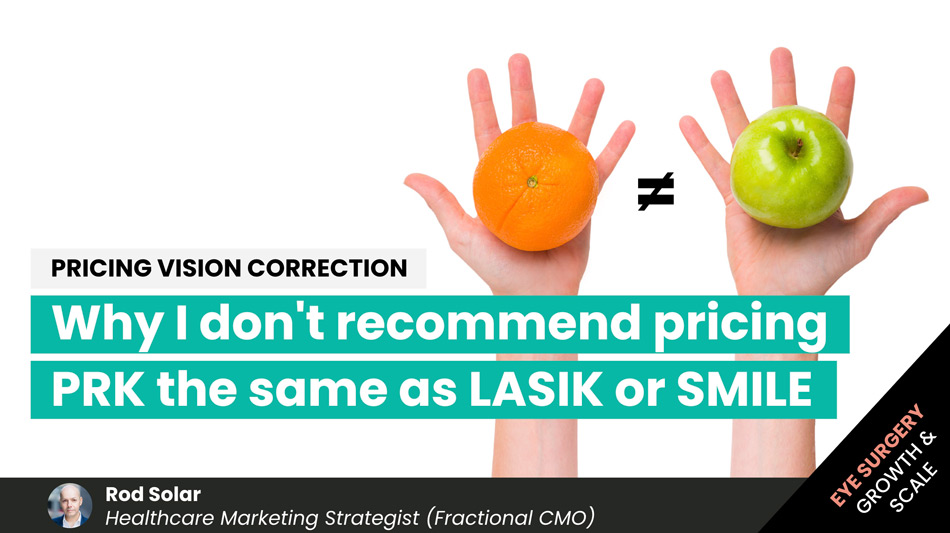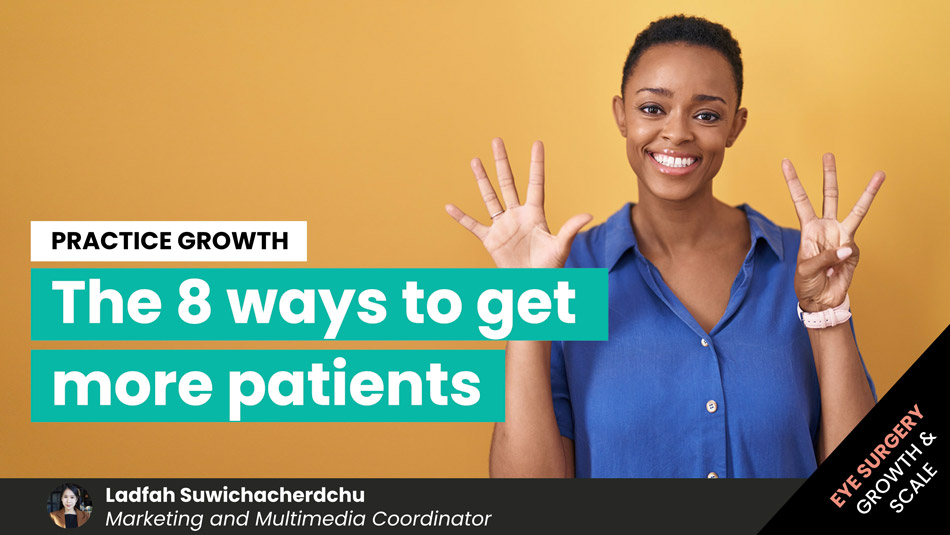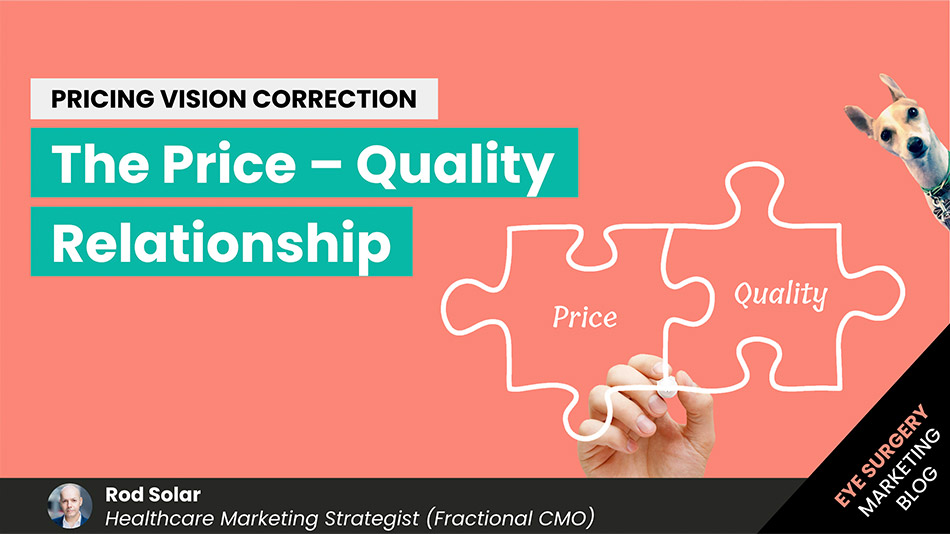
Pricing vision correction: The Price – Quality Relationship
Why do nearly 30% of retail prices end with the numeral 5 (i.e. £4.95)? Why do over 60% of retail prices end with the numeral 9 (i.e. £4.99)? Why does Wal-Mart, a brand name synonymous with “real bargains” usually end its prices with the numeral 8? Even more curious, why is the third most common ending numeral (after 9 and 5); the number 0 (7.5% of prices)? The reason is psychological pricing.
Psychological pricing: Are consumers really fooled by odd-number pricing?
The theory is that consumers ignore the least significant digits rather than do the proper rounding. Even though the last two digits are seen and not totally ignored, they may subconsciously be partially ignored. It has also been suggested that odd-pricing is perceived by the consumer to be the vendor’s lowest possible price.
Walmart, being as clever as they are, opts to end its prices with an “8”, in order to appear just that bit less expensive than the competing odd-pricers.
High end, premium quality retailers (i.e. Nordstrom), on the other hand, tend to complete their prices with round figures (i.e. “$100.00”), suggesting a greater respect for their customers’ sophistication while sending a message that says “Hey, we know you know how to read a price, so we’re not going to try to bamboozle you into believing it’s less than it is.”
The take-away is: If you want to look like a real bargain, price oddly. If you want to appear as a premium offering, price in round numbers. In my view, few professional service offerings want to be associated with a “bargain”. One could say that there is something… unprofessional about it. It is, however, a viable option for those thriving in this space.
If you’ve read my other pricing posts you’ll already know that I have a bias towards premium pricing in vision correction. Perhaps it’s my comfort zone, but I feel that certain fields would do well to avoid cutting costs to the extent that quality is diminished. And on a personal note, I’d rather work smarter than harder.
David Ogilvy, advertising’s “great man”, said it best when he wrote: “… there are now unmistakeable signs of a trend in favor of superior products at premium prices. The consumer is not a moron, she is your wife.”
NOTE: The best way to answer that nagging question about practice growth or marketing or patient volume in the back of your mind is to book a free 15-minute compatibility call. Get some options and go away with a clear idea of what’s possible.
The price-quality relationship: Is “expensive” a bad word?
I don’t think so. Like most things, it’s more complicated than that. In the absence of other cues (and that’s important), price is an important factor in the consumer’s perception of the product’s quality. The higher the price, the better the buyer believes the quality of the product to be. In one study (Myers and Reynolds, Consumer Behaviour and Marketing Management), 400 people were asked what terms they associated with the word “expensive”. Over two-thirds replied with terms relating to high quality, such as “best” and “superior”. This well-documented fact has been demonstrated repeatedly in marketing research.
However, as anyone who puts on their “consumer’s-hat” will attest, we find it nearly impossible to resist a real bargain. So, which option do you choose? Well, as discussed in a previous post on vision correction pricing strategy, you have to choose one, or you’ll be fighting a war of two fronts. As we know, this is not a strategy with a high probability of success.
These charts and case study should help provide an example of how to use psychological pricing and what is known as the price-quality relationship.
The Price v Quality Matrix
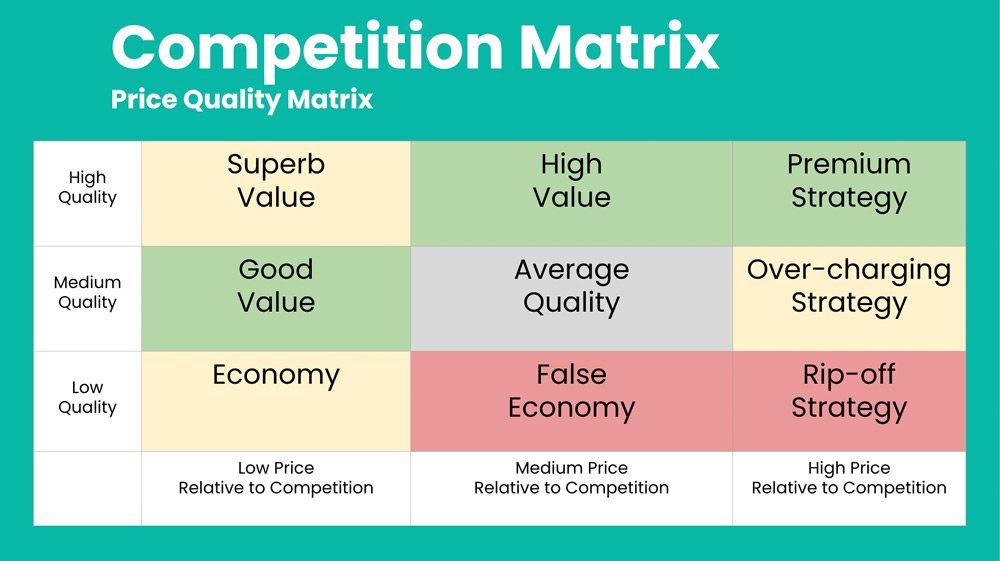
This chart illustrates 9 market positioning strategies. As discussed, the “Average” position in grey, that many marketers decide to occupy, is literally neither here nor there. It is wishy washy, undefined, unappealing, and unimaginative. The yellow positions are viable entry points, but they are not places you’ll want to live for long. The red positions are deadly. And the green positions, are good strategic options, depending on your size and marketing strategy. You’ll find it useful to take a moment and imagine where your professional service business finds itself relative to your competitors.
We’ve been applying this approach with our clients for years. And, we used this approach nearly 10 years ago when we helped launch what can be arguably considered one of the most successful Clinics in a UK elective healthcare category. The following is a simplified illustration based on that example (some of the details have been changed but the logic remains the same):
Starting position: Average
The Clinic (“You” in the red circle) initially adopted the “Average” position. The competitors at the time were 2 large multiple players (in green) and 3 smaller independent players (in purple). In this scenario, the Clinic had to adopt a strategy that would put them in a light green position if they were to differentiate themselves from the rest:
So, which position would you choose? Obviously, the red and yellow positions are one that you’d choose to move away from, not towards. The “Ideal for Penetration” wasn’t really an option, because the Clinic, like most small businesses, didn’t have the competency or funding required to perform at high volume or “buy the business” with a penetration marketing strategy (read this post to learn more about penetration and creaming pricing strategies).
The “Real Bargain” position is an attractive one. It’s easier to sell in that space, but you’ve got to be work really hard and fast to recoup your start up investment. If you’re unwilling to cut corners on quality, you’ll find this to be a challenging and conflicting space in which to compete.
If we had chosen this position as an aim, this is what the market would have looked like nearly a decade later:
Positioning Option A: Real Bargain
Hindsight is always 20/20, but positioning in the “Real Bargain” space would have been a poor choice (besides, it went against the grain of this particular
NOTE: The best way to answer that nagging question about practice growth or marketing or patient volume in the back of your mind is to book a free 15-minute compatibility call. Get some options and go away with a clear idea of what’s possible.
About the author

Rod Solar
Founder & Scalable Business Advisor / fCMO
Rod Solar is a co-founder of LiveseySolar and a Scalable Business Advisor for its customers. Rod mentors and coaches eye surgery business CEOs/Founders and their leadership teams to triple their sales, double their profit, and achieve their “ideal exit”.
Related Posts
Meet our Co-Founders
We’re passionate about helping leaders of high-quality, growth-minded practice owners double their practice revenue

Rod Solar
Founder & Scalable Business Advisor
For over 20 years, I’ve helped ophthalmology entrepreneurs scale their private practices. I specialise in doubling revenue within three years by offering a proven framework, hands-on experience, and a team of experts who implement what works. We take the guesswork out of growth and scale, so you can focus on delivering exceptional patient care while maximising the value of your business.
LiveseySolar completely transformed the way we were approaching this… We’ve gone from having just the dream of having a practice to having a practice up and running with people making inquiries and booking for procedures… It’s extremely pleasing. We feel lucky we connected with LiveseySolar.
— Dr Matthew Russell, MBChB, FRANZCO, specialist ophthalmic surgeon and founder of VSON and OKKO

Laura Livesey
Founder & CEO
I’m the co-founder & CEO of LiveseySolar. I’ve developed powerful eye surgery marketing systems that increase patient volumes and profits for doctors, clinics, and hospitals, since 1997.
Rod and Laura know as much about marketing surgery to patients as I know about performing it. They are an expert in the field of laser eye surgery marketing. They know this industry inside out. I believe that they could help many companies in a variety of areas including marketing materials, sales training and marketing support for doctors.
— Prof. Dan Reinstein, MD MA FRSC DABO, founder of the London Vision Clinic, UK






